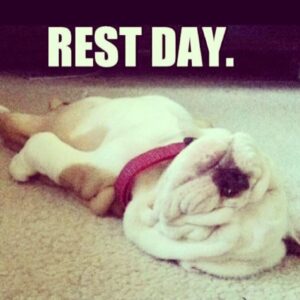Whether you’ve been in lockdown due to COVID-19 restrictions or have just slipped away from your regular exercise regimen due to lack of time or motivation, when you are ready to get back into the groove of working out be sure to ease back into the process. Avoid common injuries and achieve your goals by following a few tried and true practices.
 Start Slow
Start Slow
When your body has been inert, it’s sometimes difficult to gear back up. Doing too much too quickly can lead to pain, and more importantly, injury. Remember you aren’t at the same point physically that you were before falling off the exercise schedule. After all, you had gotten to that point gradually. The truth is, we lose our physical strength and flexibility a lot faster than we gain it. With that in mind, be gentle with yourself. If you used to hammer out an hour on the treadmill five days a week, start with 20 minutes three days a week. Begin with exercises at a lower level to reintroduce your muscles and joints to the movement. And remember that form is more important than intensity. Protect your body with proper form.
Talk to Your Medical Professionals
Every “body”’s situation is different. Make sure you’re entering into the best exercise options for you with permission and advice from your medical professionals, especially if you’ve been diagnosed with a medical condition or are currently participating in physical therapy following a surgery or injury. The last thing you want is for your increase in activity to cause harm.
Types of Exercise
What you do and how you do it matter. While going for a run might seem like a good place for you to start, remember that a combination of activities, and starting slow, is the key to long-term success. Increasing cardiovascular endurance is one component, and an important one, that helps your heart, lungs, and muscles. However, equally important is resistance training as well as methods that increase flexibility. When getting back into the exercise groove, work those three components in reverse. Begin with a few days of gentle yoga or stretching. Then add in some resistance training exercises. Finally, start to incorporate cardio into the mix. Your body needs time to make the transition from couch to counting miles so stretch and strengthen before expecting too much from it.

Rest Days
Giving your body time to rest is just as important as the type and quantity of movement you participate in. Muscles need time to recover from strenuous activity. So make sure your routine includes a rest day every two to three days and don’t work the same muscle group within a 24 hour period.
Warm-up and Cool Down
Once you find the motivation to workout you’re likely to want to put those shoes on and hit it hard, but it’s important to remember that the power bench presses and Crossfit exercises are not the only part of your workout. Start with a gradual warm-up to get your body primed for what’s ahead. At the end of your intense cardio or strength training, slowly lower your heart rate with a gradual reduction in the movement that includes deep stretches while the muscles are still warm.
Drink Water
Water is essential to the human body, especially when working out or exposing yourself to extreme heat. Even mild dehydration can cause muscle cramps, fatigue, and a host of other symptoms so load up on water as you get back into moving.
 Pay Attention to Pain
Pay Attention to Pain
Exercise should not cause acute pain. If you have sudden pain of any type, stop immediately. Try to walk it out, but stop again if the pain is intense. On your recovery days, it’s common to be stiff or sore, but if you experience pain that interferes with your daily activities, avoid exercises affecting that area and use R.I.C.E. (Rest, Ice, Compression, Elevation) practices to see if the pain subsides over a week or so.
Find a Partner
Exercise is more fun with a partner. Plus having someone hold you accountable for getting to the gym or hitting the trail is a bonus too. If your partner has been in the workout game longer and is at a different fitness level, don’t try to keep up right away. Instead, set your own goals and meet your partner when you can.
Set Goals

Speaking of goals, having an end result in mind will help you stay the course on those days you just don’t feel like putting in the effort. Tape a picture of yourself to the bathroom mirror or refrigerator. Keep a log of weight loss using a phone app or a written journal. Take note when you lift more, walk longer, or get to the top of the stairs without getting winded. Acknowledge your small successes as you work towards your larger goals. We believe in you and are always here to support you in achieving your fitness goals. If you have any questions or concerns, contact the team at Encore Physical Therapy.
